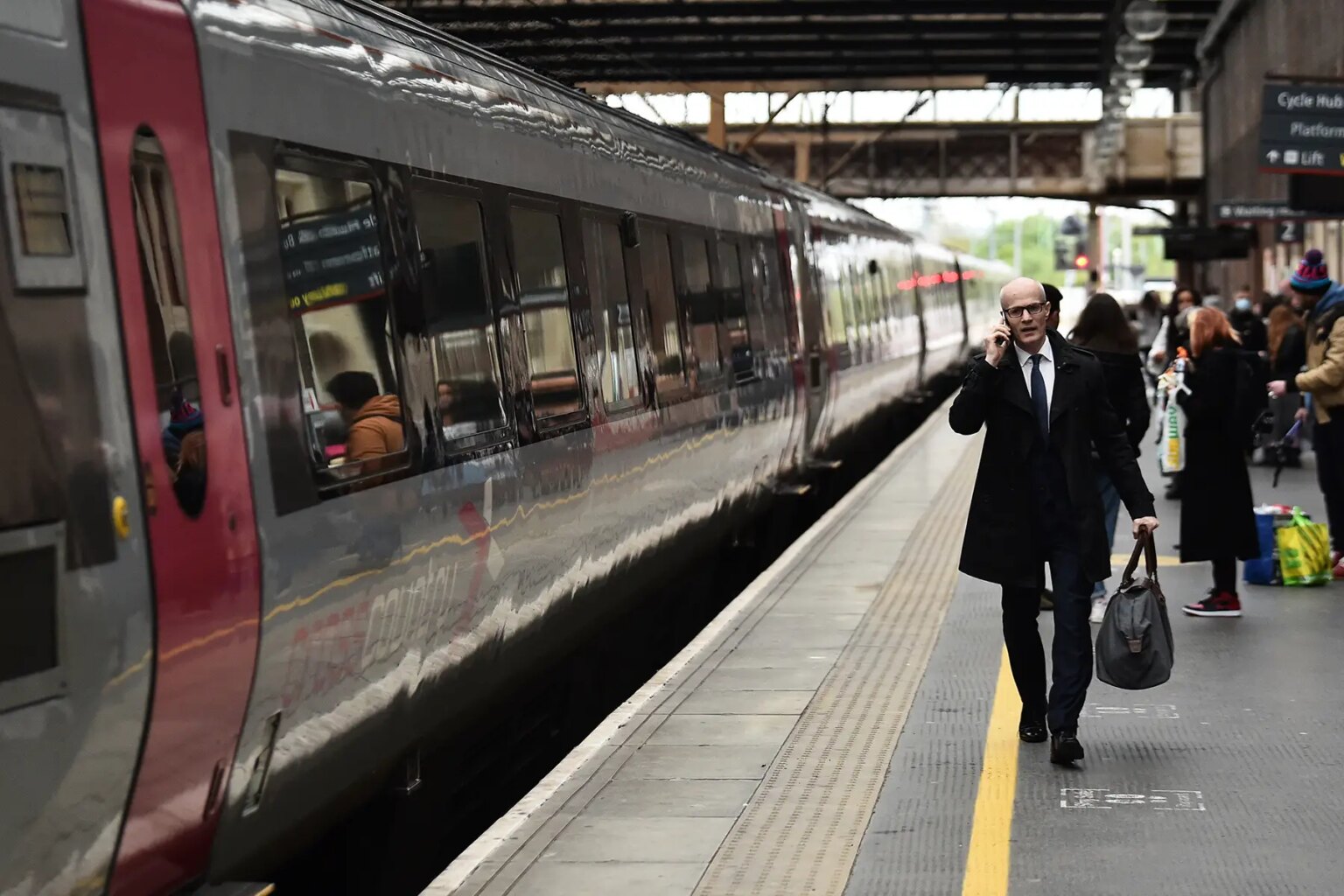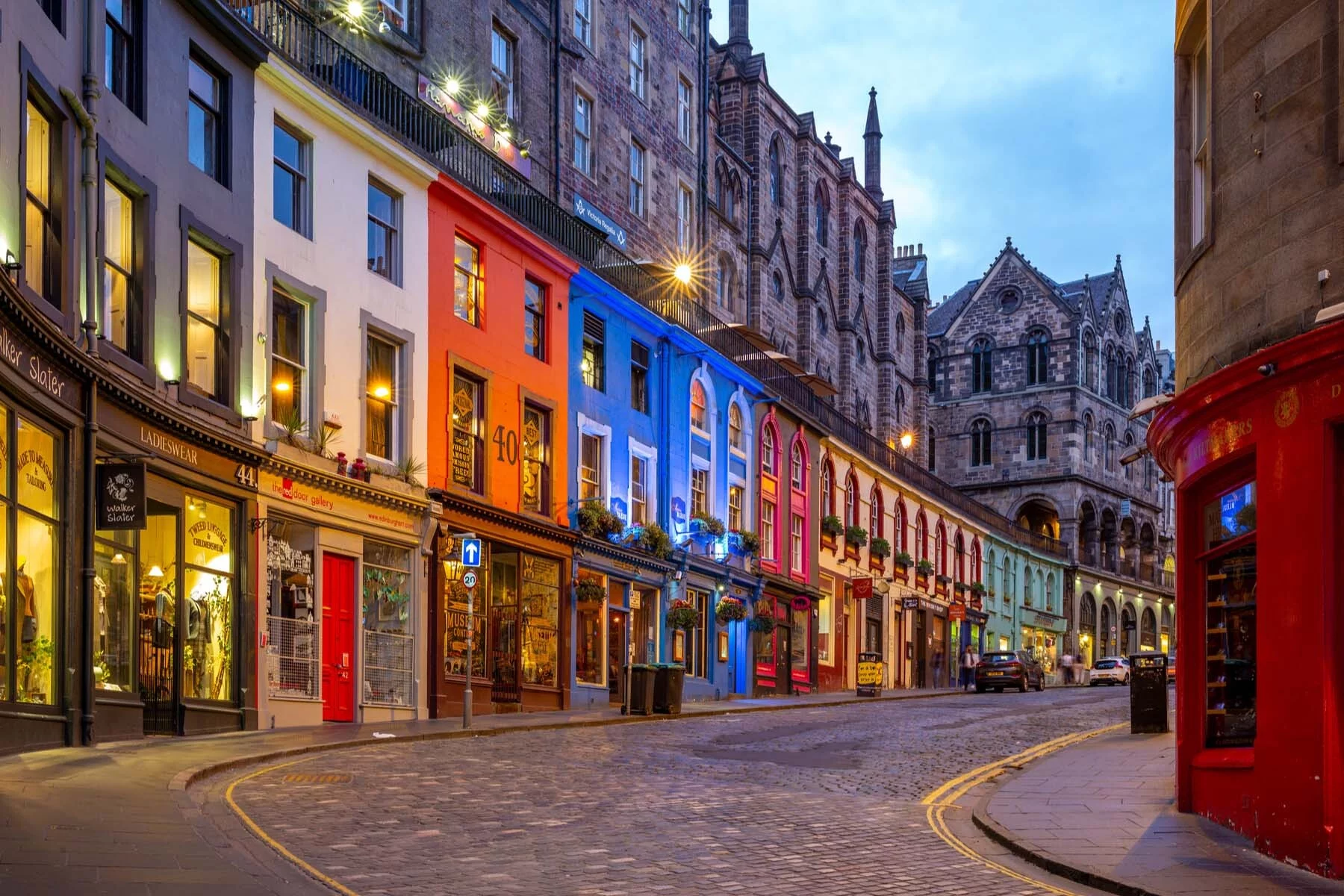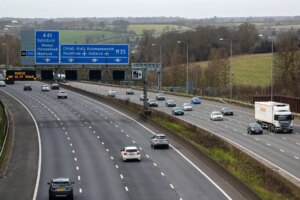Getting your head around the public transport system in a new country can be challenging. Whether you’re catching the bus to work or taking the train for a weekend away, it’s good to know what to expect when you take public transport in the UK.
To help ensure you have everything you need to know, our guide to UK public transport includes the following information:
- Introduction to public transport in the UK
- Public transport apps in the UK
- Bus transport in the UK
- Coach transport in the UK
- Traveling by metro in the UK
- Train transport in the UK
- Transport by tram in the UK
- Airports in the UK
- Taking a taxi in the UK
- How disability-accessible is public transport in the UK?
- How environmentally friendly is public transport in the UK?
- Making a public transportation complaint in the UK
- Useful resources
Omio
Want to fly away from it all? Or maybe you're looking for a family adventure by train? Wherever you're going, Omio can help you find the best deals for your journey. This one-stop shop lets you compare a range of transport modes, explore new destinations, and buy tickets at the touch of a button. Wherever adventure takes you, get there with Omio.
Introduction to public transport in the UK
If you’re new to the UK, you’ll soon discover that one of the British public’s favorite pastimes is complaining about the country’s public transport. But are all those complaints justified?
Well, like many of the UK’s public services, that largely depends on where you live. In large cities, public transport networks are well-developed and cost-effective. However, in smaller towns and cities, the service can be temperamental at best.
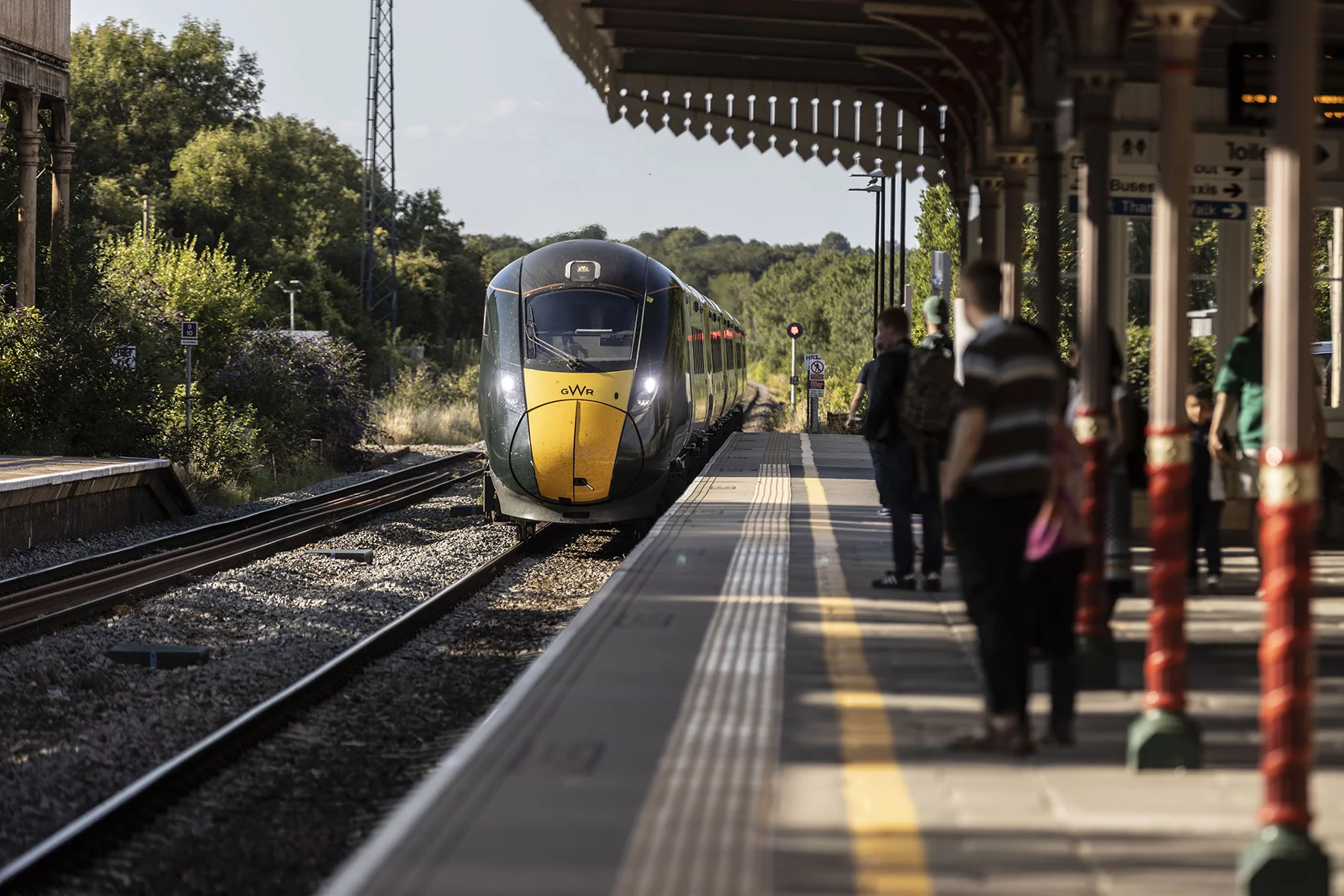
Public transport in the UK takes on many forms. For longer journeys, the UK offers trains, long-distance coaches, and airplanes. On the other hand, you can use buses, the metro, trams, and taxis to cover shorter distances.
The UK government greatly values its public transport system, with a recent investment of £61 billion to support transport infrastructure. In response, British citizens frequently make use of their various transport options, with 2.5 billion trips made in the last year.
Public transport apps in the UK
There are plenty of reliable and useful apps and websites to help you plan your commute in the UK. Some of these include:
- Citymapper is one of the most used apps for urban commuting. It provides information on buses, trains, the tube, scooters, and mopeds in London, Birmingham, and Manchester. You can access it on iOS, Android, or your web browser.
- Omio is a useful website and app for planning longer journeys and comparing options by road, rail, and air. They also allow you to book tickets and set up alerts so you can catch great deals.
- Trainline UK helps you plan your train and bus journeys all across the UK. A handy feature of this app is that it compares ticket prices between train and bus operators. This enables you to save some extra cash. You can access it on Android, iOS, or through your browser.
- Transport for London (Tfl) tracks public transport all over London, from buses, the tube, trams, the London Overground, and ferries. Tfl is available on Android, iOS, and browser.
- Uber is one of the UK’s most popular taxi apps. It operates in most UK regions and enables you to see your taxi fare ahead of your journey. You can download it on Android or iOS.
- UK Bus Checker tracks bus journeys all over the UK, covering over 300,000 bus stops. With real-time bus information and the option to purchase mobile tickets, it is your go-to app for catching a bus in the UK. You can download it on Android and iOS.
Bus transport in the UK
Whether you’re in the city or the country, the local bus is the most common form of public transport in the UK. It should, therefore, come as no surprise that the bus is the most popular form of public transport. In fact, 1.5 billion local bus journeys were completed in the last year. That said, the quality, cost, and efficiency of bus travel can vary wildly across the country.
In some cities, including London and Reading, for instance, the bus network operates as a not-for-profit by the local government. This helps to keep fares relatively low and services of good quality. In other areas, however, routes are run by private companies. This results in a significant increase in bus fares, particularly in rural areas. Despite this, for many UK residents, the bus remains the most accessible mode of public transport.
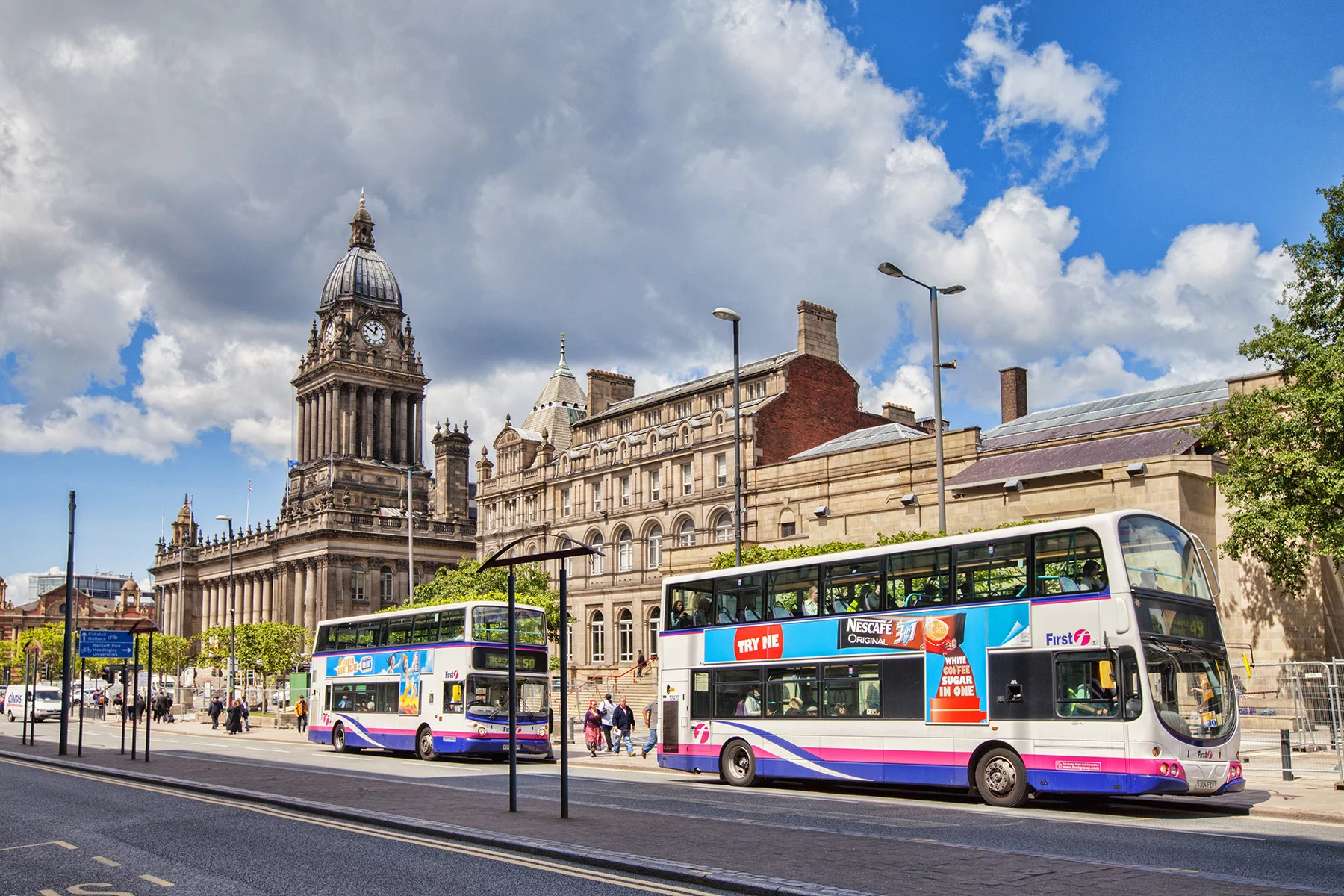
When entering a bus, it is customary to tell the driver where you are traveling, so that they can generate a ticket for you. The price of the ticket usually reflects the distance you will travel.
When exiting a bus in London, you do not need to check out with a travel card. However, outside the capital you may need to, so check what your fellow passengers are doing when leaving the bus.
Free Wi-Fi is available on some bus routes.
Bus tickets and costs in the UK
Bus prices differ depending on who is traveling, the destination, and the bus company. Check the Tfl website to see how much a bus ticket costs in London.
If you are traveling outside of London, check Stagecoach or your local bus operator’s website to calculate the price of your bus ticket.
Types of bus tickets in the UK
There are different types of tickets you can buy aboard UK buses:
- Single tickets: a ticket valid for a one-way journey
- Return tickets: valid for one journey from one destination and back again
- Day tickets: useful for tourists, this ticket provides unlimited trips on the day of issue with the bus operator’s services
- Group tickets: suitable for families, a group ticket generally covers up to six people and can help you save on paying for individual tickets
An increasing number of buses in larger towns and cities accept contactless payment on-board. In some areas, such as London, you are only able to pay using either your contactless credit/debit card or a local transport card, such as London’s Oyster card.
In more rural areas, contactless payment may not be possible. However, there may be a ticket machine at the bus stop/station. Alternatively, take cash to avoid disappointment or check with your local operator ahead of time. Bear in mind that some bus companies do not give change, so take coins with you where possible.
Discounted bus tickets in the UK
Discounts are usually available for:
- Old-age pensioners – people over 60 can travel for free with an older person’s bus pass.
- Full-time students – students 18 or over in London can save 30% if they apply for an Oyster photocard. If outside of London, you can register for a Stagecoach student card.
- Children under 18 years old – children under the age of 15 can travel for free with a Zip Oyster card. Adolescents between 16-to-17-year olds can benefit from a 50% discounted rate with a 16+ Zip Oyster card.
- People with disabilities – with a disabled person’s bus pass, people with mental and physical disabilities can travel for free on the bus.
If you fall within these groups but do not hold a special pass, you should also be eligible for a discounted price when buying an individual ticket. You can check how much your discounted price comes to with your local bus operator.
Bus timetables in the UK
Bus timetables differ depending on the region in the UK; however, most buses start running at around 05:00 and stop running at around 00:00 on weekdays. Outside of urban areas, buses often stop running in the early evening.
On the weekend, on the other hand, buses may run past 00:00 but might pass less frequently.
To find out when your last bus will pass, check your local timetable ahead of time.
Coach transport in the UK
While buses run on local routes, coach travel in the United Kingdom operates on an intercity network that connects the country’s largest towns and cities. At your local bus station, you’ll be able to buy tickets and plan your journey. Alternatively, you can book your tickets online.

There are several regional and national coach companies, although National Express and Megabus operate the largest number of nationwide routes.
Coaches will make comfort stops at service stations during the journey. Here, you’ll be able to use the toilets, buy refreshments, and stretch your legs. The driver will inform you of the departure time before you exit the coach, so be sure to listen out for his announcement. Free Wi-Fi is usually available on board.
Coach tickets and costs in the UK
Coach travel is often significantly cheaper than train travel when it comes to traveling across the country. This makes it a good option for those traveling on a budget, as most large cities have direct coach connections to London. For instance, when booked in advance, London-Edinburgh train tickets can cost up to five times more than coach tickets.
International coach routes also operate from London’s Victoria Coach Station. These are also often cheaper than plane or train tickets, and direct routes go as far afield as Bucharest in Romania.
Ticket prices vary depending on where you are traveling to. Check with National Express or Megabus to calculate the cost of your journey.
While you can make significant savings traveling by coach, keep in mind that some distances can be time-consuming. For example, London to Edinburgh takes over 11 hours on a coach, compared to 4.5 hours on a train.
Traveling by metro in the UK
If you’re living and working in London, it’s highly likely that the London Underground, or tube, is a part of your everyday commute. Operated by the Mayor of London via TfL, it is an iconic part of London life. London isn’t the only UK city with a metro system, however. Newcastle, Glasgow, and Liverpool all have underground networks.
These metro routes offer a quick and efficient alternative to the local bus and train network for commuters and residents in these areas.
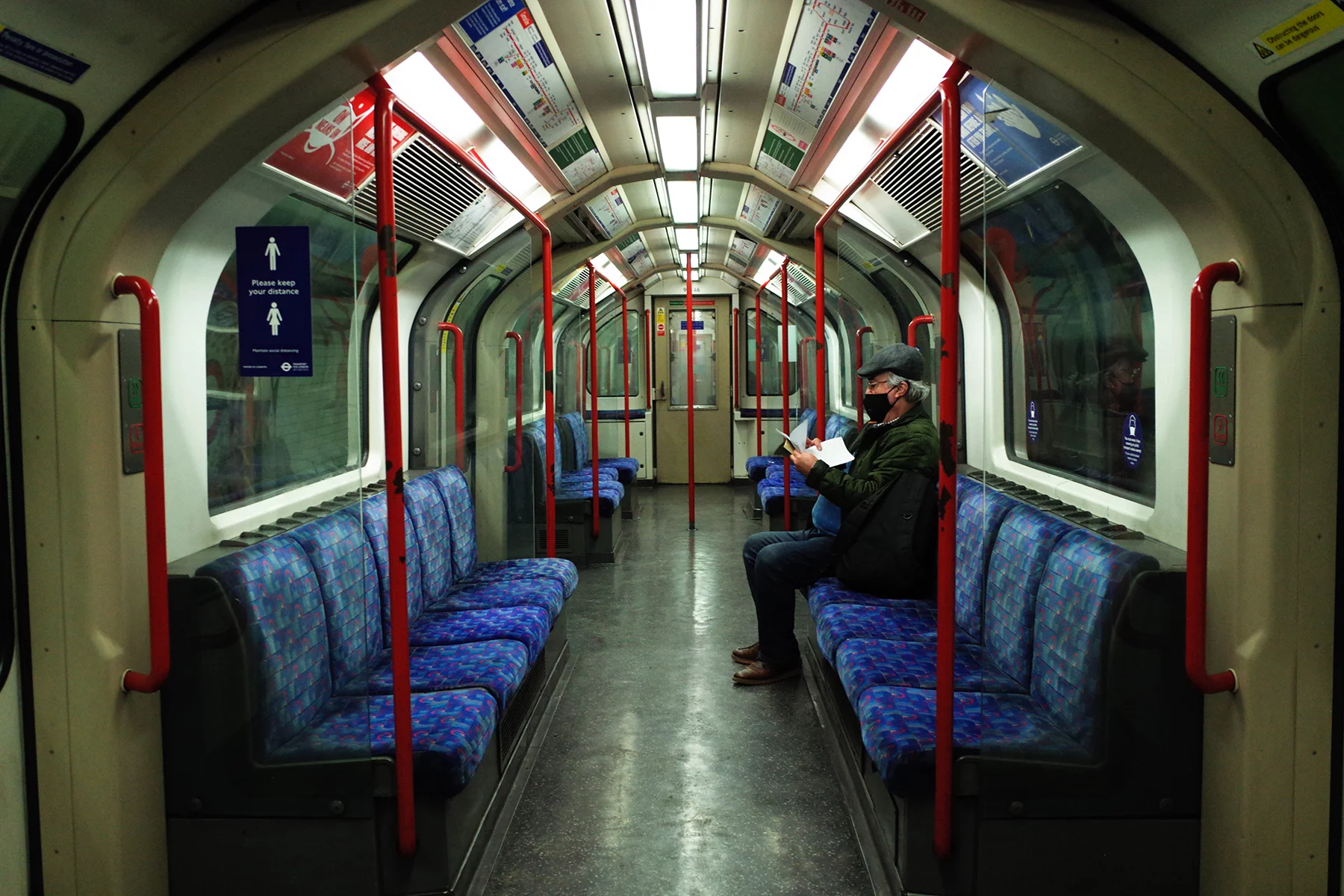
There are several ways to pay for your travel in London. These include:
- Buying tickets at the station from a machine or ticket office
- Using an Oyster card
- Tapping in and out at the ticket barrier with a contactless debit or credit card
An Oyster card is useful if you frequently catch the tube in London. You can sign up for your Oyster online and have it delivered by mail, or you can buy it at a tube station. A new card costs £5, which you must then top up to board a train. You can top this up via the Oyster contactless app (available on iOS and Android), on the Tfl website, via the top-up machines, or at a Tfl ticket desk.
Although most people travel on the metro with their Oyster card or contactless debit or credit card, you can also buy single tickets and group tickets (minimum of 10 people).
Metro tickets and costs in the UK
Prices for the tube vary depending on who is traveling, which zone you are traveling to, and what time of day you make your journey.
Adults generally travel at a standard fare, whereas the following travel at a discounted rate:
- Students
- Adolescents between 16 and 17
- Pensioners
- People with disabilities
Children between 5 and 11 and 11 and 15 years of age can travel for free, but must nevertheless present their Oyster Zip card to board the tube.
Metro timetables and maps in the UK
Peak hours for metro services are from Monday to Friday (not including public holidays) between 06:30 to 09:30 and between 16:00 to 19:00. Should you travel within these times, your fare will be higher.
Timetables vary between zones, although most metros in the UK run from 05:00 till 00:00. On certain lines at the weekend, 24-hour night services operate. To calculate your route, check your metro’s website.
When traveling around London, you’ll often find it’s quicker and easier to simply walk between some Underground stations rather than take the tube. TfL has published a series of tube maps that highlight walking distances between tube stations.
Train transport in the UK
The UK has a rich and proud history when it comes to train travel. This can be seen at the country’s impressive train stations, including London St Pancras International, Bristol Temple Meads, and Huddersfield. Generally, trains in the UK are clean, easy to understand, and relatively efficient.
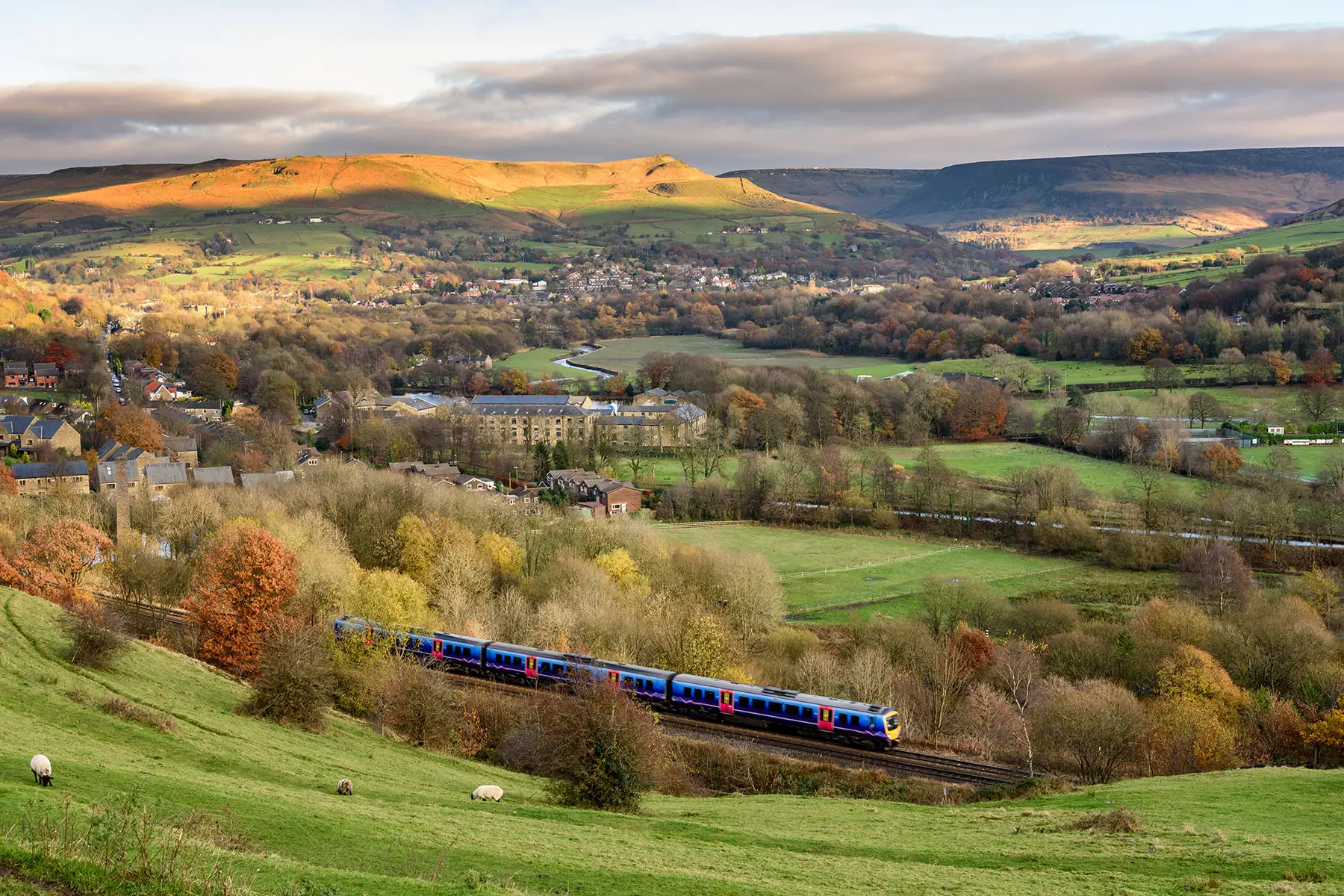
The UK train network was split into different smaller franchises, which caused confusion for both locals and visitors alike due to the regional disparities in service and price. This was the case until 2020 when the British government abolished rail franchises and effectively renationalized the entire system. Beginning in 2023, Great British Railways will operate almost all rail services in England, Scotland, and Wales.
Train travel in the UK is fairly expensive as a method of transport in comparison with the rest of Europe, especially when you buy tickets on the day of travel. You can limit the expense by buying tickets ahead of time. Another way to save money is by splitting your journey with services such as SplitTicketing.com, Split My Fare, or searching for split rail tickets online.
Despite the ticket prices, traveling by train is incredibly popular in the UK, with 990 million passenger journeys recorded over the past year. It is also the mode of transport receiving the most public sector spending in the UK.
Toilets are available on board all trains, while Wi-Fi is only available on some. You can bring up to two pets with you, free of charge, so long as they do not inconvenience the other passengers or members of staff.
Train tickets and costs in the UK
Train tickets vary depending on the destination, the time, and the type of person who undertakes the journey.
If you are traveling frequently by train, it is advisable to have a Railcard. This is either a physical or a digital card to grant you access to trains at one-third the price of a usual train fare. You can purchase your Railcard online or at a National Rail staffed ticket office in your train station.
Railcards are valid for either one or three years and must be presented in person for your discount to apply. Discounts are available for almost everyone, including adults, students, disabled persons, senior citizens, and families.
If you are not in possession of a railcard, you can always buy a single or return ticket. Prices vary depending on your journey. You can buy your tickets online through National Rail’s journey planner, at a ticket office at your train station, or at a self-service machine located in the station.
On some more rural routes, you may be able to buy tickets from a conductor on board. You will likely be required to show your ticket during your journey, and you will usually need it to exit the station.
Payment is accepted either by debit card, credit card, cash, or with a National Rail voucher.
If your train is canceled or delayed, you may be eligible for a refund. Simply visit the ticket office at the station and enquire about claiming your money back.
Train timetables and maps in the UK
With its rich network of trains and operators, coming across a timetable with all the train times in the UK is impossible. Despite this, you can still view train itineraries and live train times on the Trainline app.
Trains in the UK do not run 24 hours per day, as they usually stop between 01:00 and 05:00. If you are unsure when your train will start or stop, check the National Rail or the Trainline websites to view the first and last trains of the day.
For more visually-minded people, you can find a map of Great Britain’s railway network on Trainline’s website.
International trains in the UK
There are just three international train stations in Great Britain: London St Pancras, Ebbsfleet, and Ashford. From these stations, you can catch Eurostar services to several European destinations, including Paris, Brussels, and Amsterdam.
Despite its name, international trains are not available from Stratford International in East London.
On the island of Ireland, trains cross the border between Newry (in the North) and Dundalk (in the Republic). The route, which stretches from Belfast to Dublin, is served both by NI Railways and Iarnród Éireann.
Prices are cheaper mid-week and rise over the weekend. Check the Eurostar website to calculate how much your journey will cost.
Transport by tram in the UK
If the local train or bus isn’t enough for you, you can always hop on the tram instead. Several cities across the UK have tram systems, which see light trams run along tracks on both public roads and segregated routes.
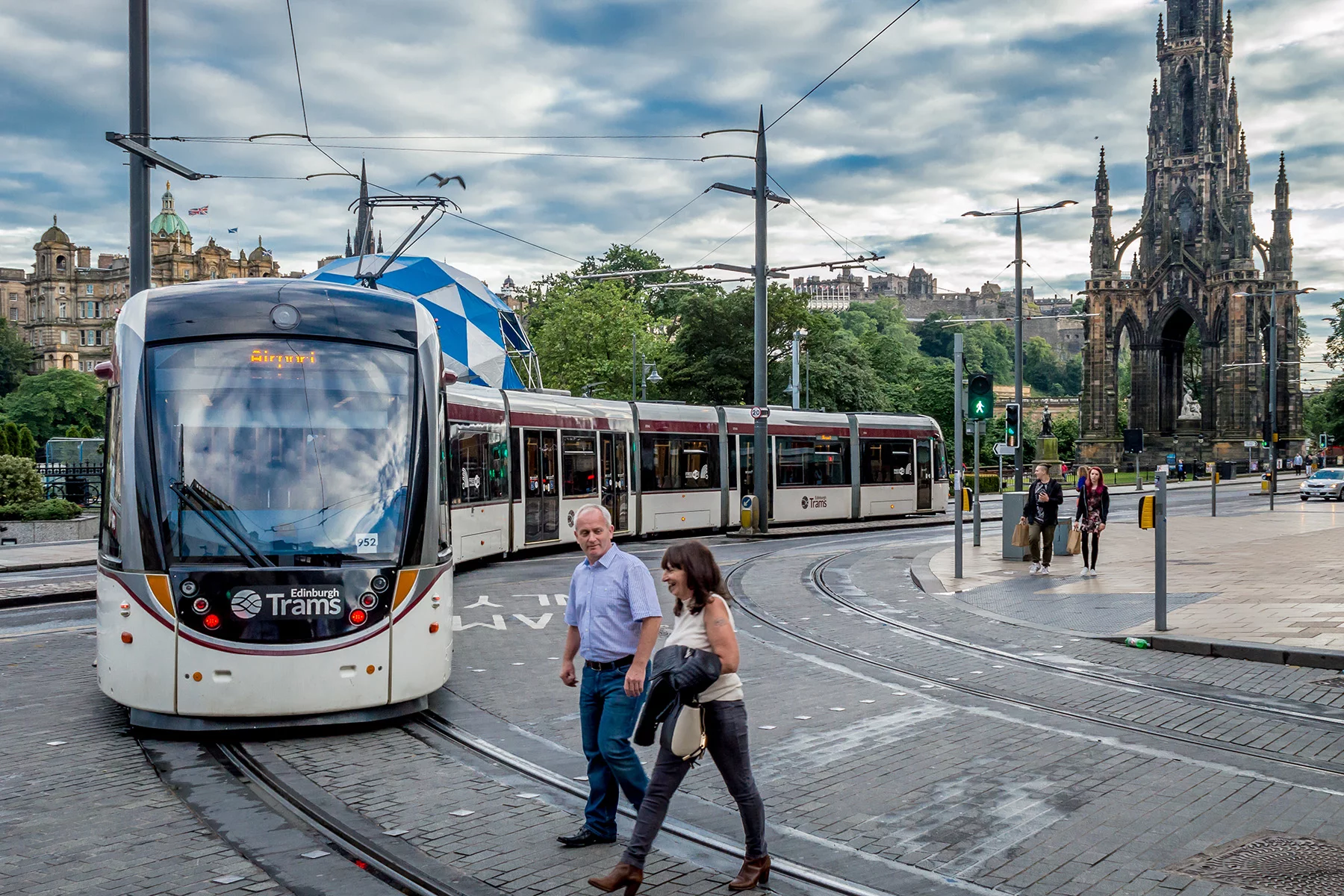
The following areas in the UK have their own tram network:
- Blackpool
- Edinburgh
- London
- Manchester
- Nottingham
- Sheffield
- Tyne and Wear
- West Midlands
Generally speaking, UK cities either have a metro system or a tram system – only London has both.
On the whole, UK trams are clean, modern, and affordable. They also often provide excellent views of the city and some have free Wi-Fi onboard.
Tram tickets and costs in the UK
Ticket fares vary depending on the city. For example, Manchester sets prices depending on what zones you travel through, whereas London’s pricing system is much more straightforward. However, tram prices are roughly in the same range as bus prices.
You can use your Oyster card or contactless credit/debit card when boarding a tram in London. If you are outside London, however, the go-to payment method is by a contactless card. In some cities, like Edinburgh, you will need to buy a ticket from a ticket machine prior to boarding.
Tram timetables in the UK
In Manchester, trams generally run from 06:00 to 00:00 on Monday to Saturday, and on Sunday from 07:00 to 00:00. Trams in London run for longer hours: generally from 05:00 to 01:00 on Monday to Saturday, and then from 07:00 to 01:00 on Sundays.
You can calculate your tram journey in London or Manchester online or, if you are outside of these cities, you can also check with your local tram operator online.
Airports in the UK
Arriving in the UK by air is fairly straightforward. There are over 40 airports located across the country. These include domestic airports, which provide essential routes for local residents, particularly those serving the UK’s many island communities.
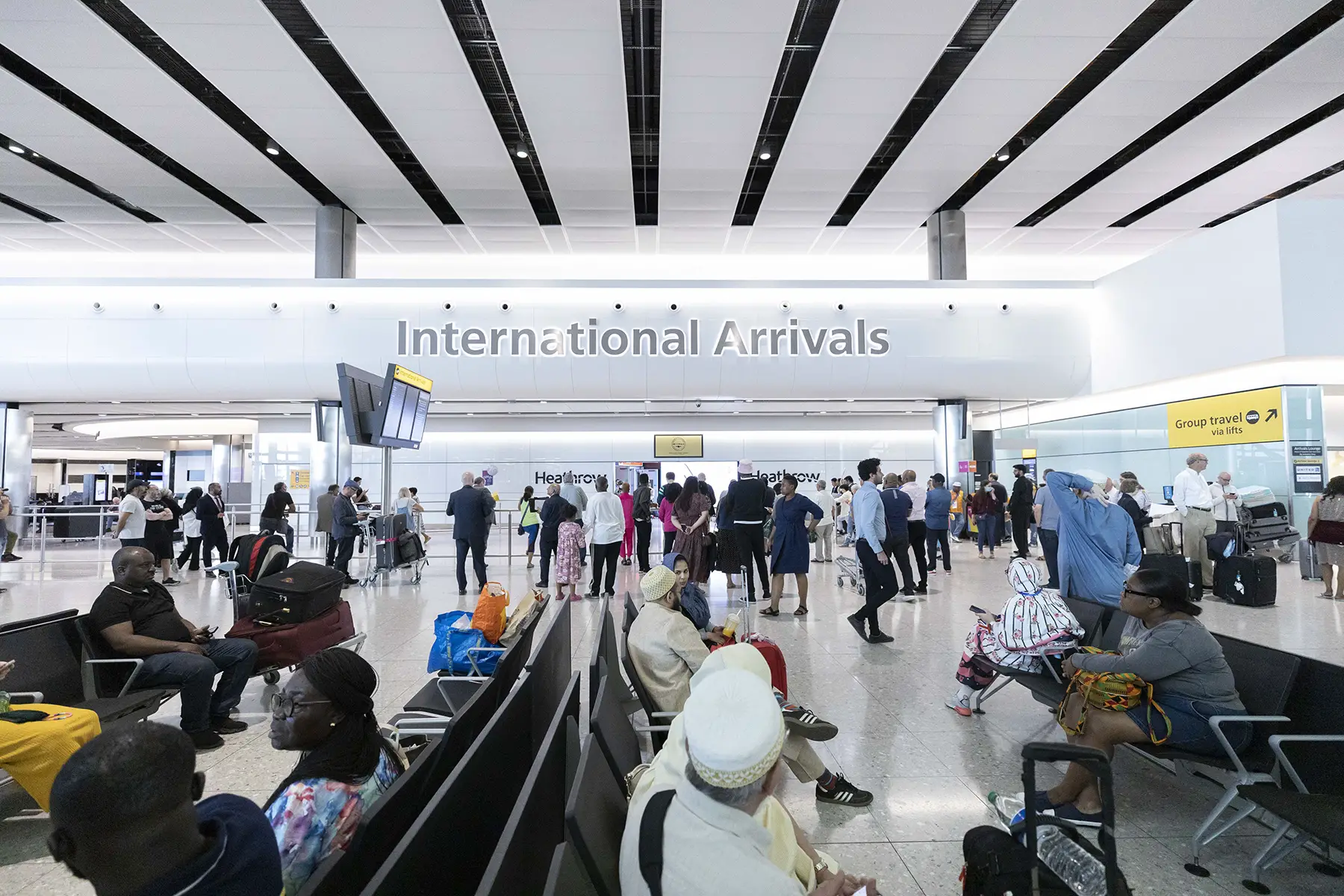
Airports in the UK are generally well-maintained and have a range of shops, restaurants, and bars to visit while you wait for your flight. All of the major UK airports are connected to their cities by public transport, whether by tram, train, coach, or local bus. London is served by six airports, but only London Heathrow and London City are on the tube network. You can reach the others by train and coach.
Busiest airports in the UK
London Heathrow is the UK’s busiest airport, followed by London Gatwick and Manchester Airport. Among its many connections, these airports have incoming and outgoing flights from easyJet, Flybe, Virgin Atlantic, Eastern Airways, and the country’s flag carrier, British Airways.
You’ll need your passport to travel abroad, even to other European countries. If you are passing through the UK in transit, you may need a transit visa. You do not need one, however, if you:
- Hold an EU Settlement Scheme family permit
- Possess a Standard Visitor visa
- Hold a Home Office travel document
- Possess a Marriage Visitor visa
If you are unsure if you need a visa when going through a UK airport, check the UK government’s website.
Heathrow, Gatwick, and Manchester all offer lounges that offer refreshments and changing facilities. Get in touch with your chosen airport to inquire about lounge options.
Taking a taxi in the UK
For many expats, the sight of black cabs on London’s streets will be a timely reminder that they’ve arrived in their new home. Black cabs are commonplace in central London, and taxi drivers are famously knowledgeable about the capital’s routes and neighborhoods. Outside central London, all towns and cities in the UK have their own taxi services should you need one.
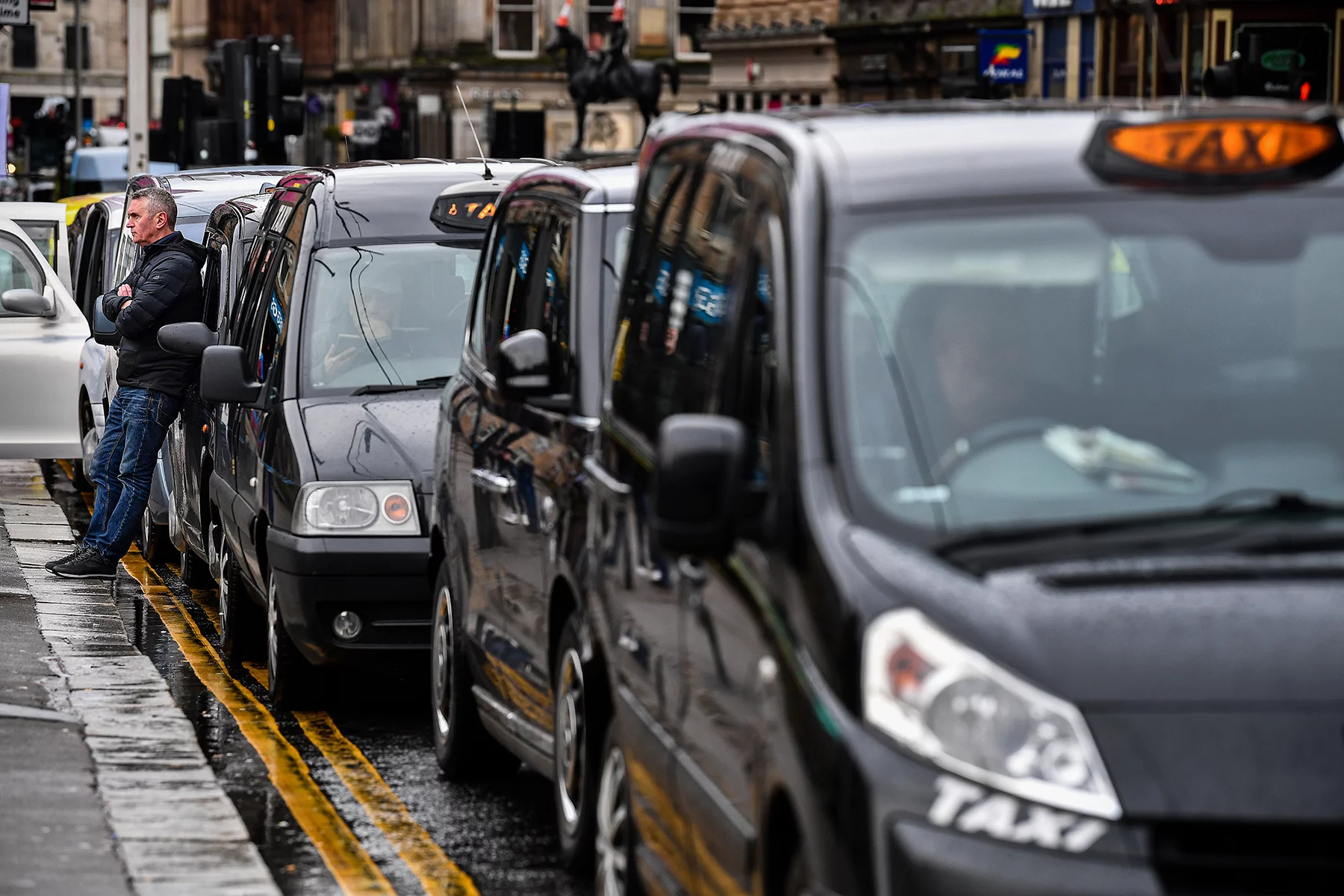
Most large towns and cities have taxi ranks where you can find a cab. These are often located near train/bus stations or in central areas. Alternatively, you’ll be able to book a taxi with a local company ahead of time in most towns, cities, and villages. If you need a taxi on the spot, you can always hail one; however, only black taxis can be hailed.
Black cabs run on a meter so you’ll be able to see the total cost throughout the duration of your journey. Costs vary depending on the time of day and distance traveled.
Taxi apps
One of the most popular ways to book a taxi is through Uber or Bolt – two well-established taxi services in the UK you can access on iOS or Android. Uber and Bolt taxis are available widely across the UK. Both apps have the benefit of showing how much your ride will amount to before you step foot in the taxi. Prices differ based on the distance traveled and the type of car you wish to travel in, given that both companies have taxis ranging from standard models to luxurious, spacious vans.
All taxis in the UK – both black cabs in cities and local minicab firms – are licensed. You should never get into an unlicensed taxi.
Feel free to tip your taxi driver should you wish, but most locals simply round up the fare to the nearest pound.
How disability-accessible is public transport in the UK?
The UK is gradually making changes to ensure that the public transport sector is more readily accessible for people with disabilities.
For people with mobility issues, over 200 train stations in the UK have wheelchair-accessible platforms and level access, ensuring that vehicles can be boarded with ease. Guide and assistance dogs are also allowed on public transport.
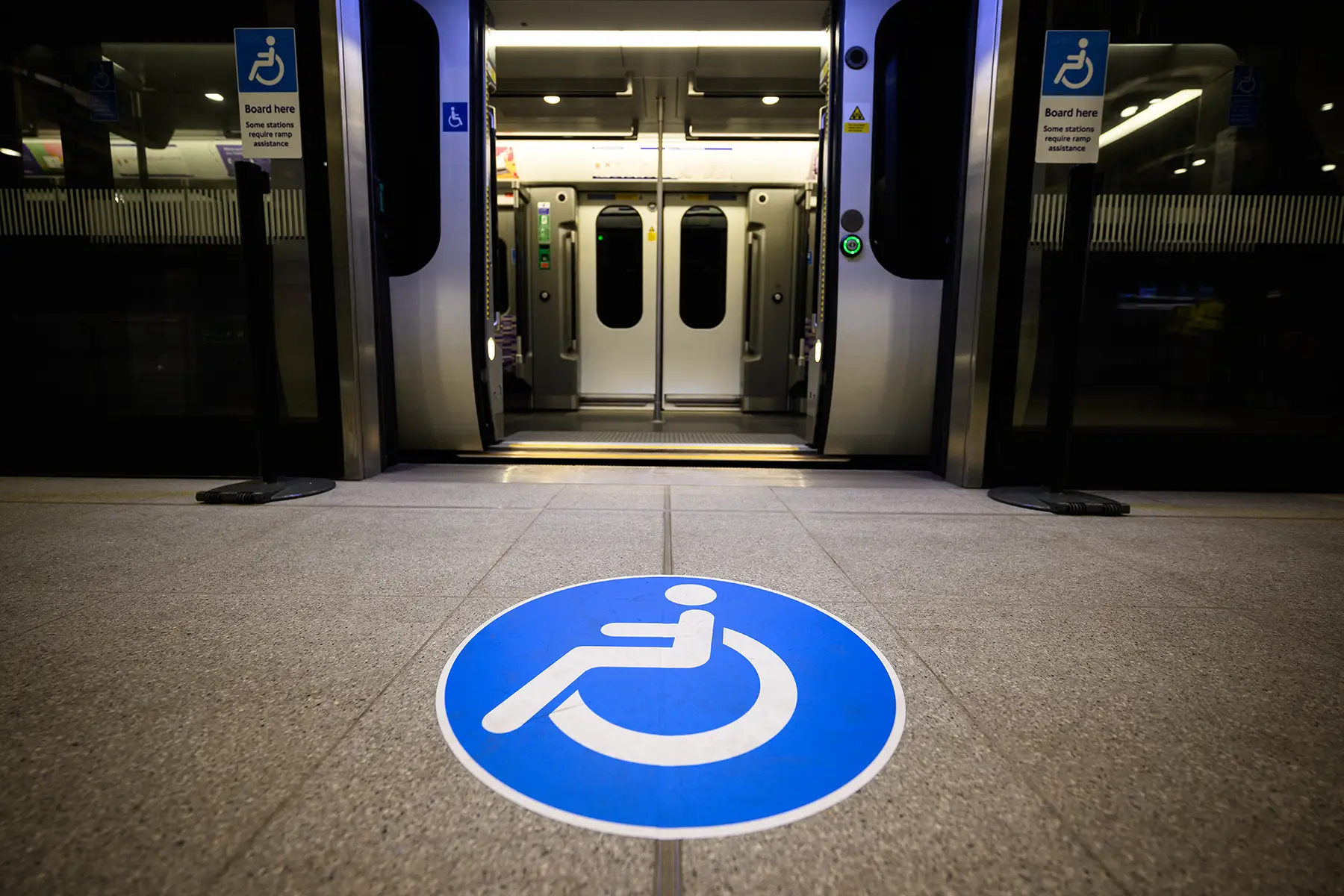
Discounts and, in some cases, free travel, are readily available if you have a disability. People with disability can register for:
- Disabled person’s railcard for discounted train rates
- Bus pass for free travel on buses around the UK
- Freedom pass for free travel across London and on buses around the UK
If you are concerned about boarding a vehicle, you can always request help at the ticket booth desks at the station, or call the station beforehand to ensure you have a seamless journey.
For those boarding a train, you can also request assistance for travel through the Passenger Assistance app, available on iOS or Android. The app allows you to list your accessibility needs and then request assistance as needed – whether your disability is visible or invisible.
How environmentally friendly is public transport in the UK?
The UK is taking great steps to reduce carbon emissions created through its public transport industry, so much so that London has been described as one of the most sustainable cities in the world.
By 2030, the Mayor of London aims for a carbon-free capital. In fact, there are currently 2,600 hybrid diesel-electric buses in London, which has cut down emissions by 30–40%.
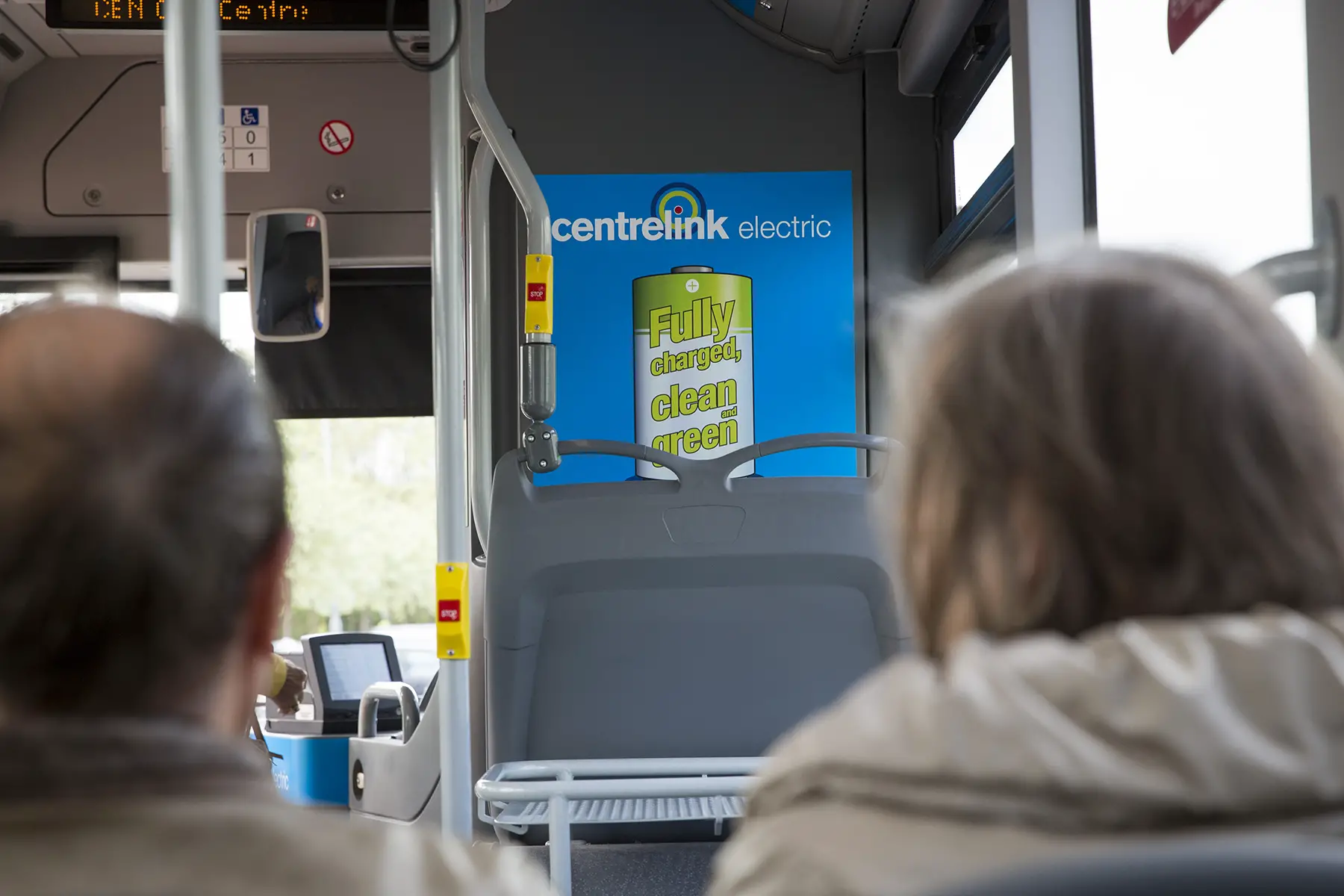
Not only is London moving toward greener pastures, but so is the rest of the UK. Initiatives such as the Department for Transport operational sustainability strategy 2021–2025 aim to promote the use of lower carbon transport and significantly reduce greenhouse gas emissions.
Making a public transportation complaint in the UK
If you have a complaint about your commute on public transport in the UK, you can either call a helpline, send an email, or write a letter.
The quickest way to pass on your complaint is through the Department for Transport through their complaints form. Otherwise, you can contact them at +44 0300 330 3000. Once your complaint has been received, the policy division will discuss your case and get back to you within 20 days with a solution.
Useful resources
- Transport for London (TfL) – transport information for London
- Transport for Wales/Trafnidiaeth Cymru – tickets and information for Wales
- National Rail Enquiries – train information, tickets, and more
